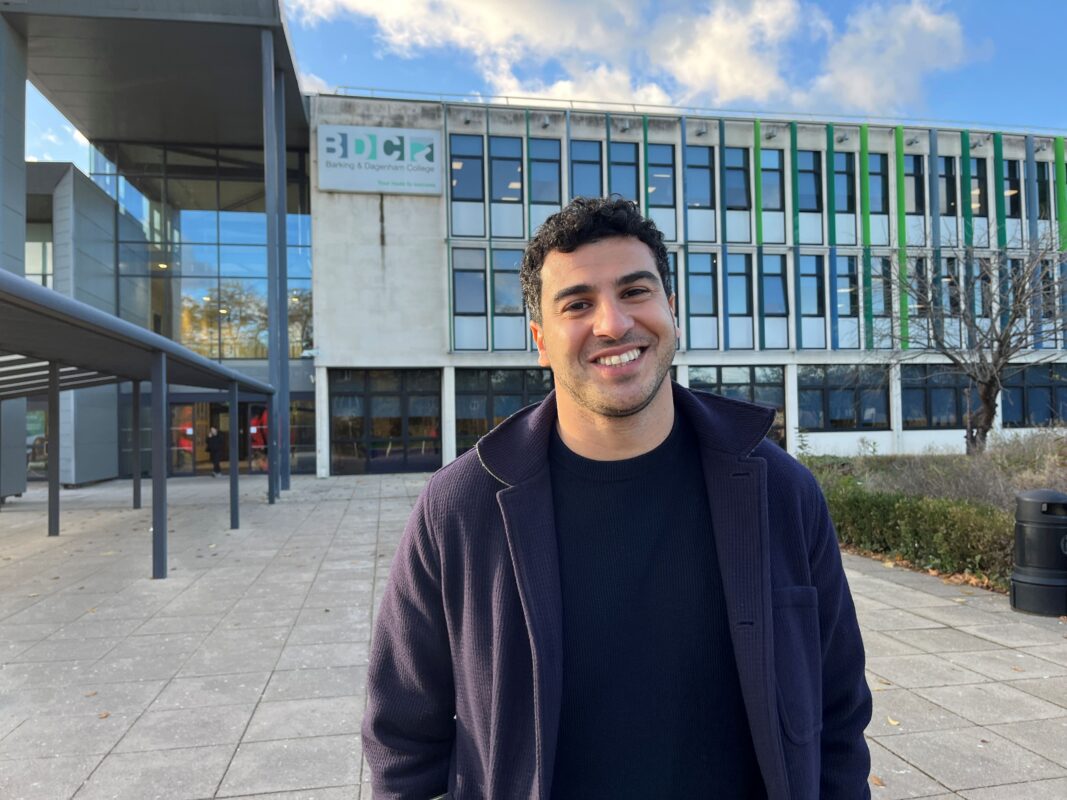Inclusive Education: Addressing Social Class Disparities in SEND Support and Development

Inclusive education aims to provide equal opportunities and support for all students, including those with Special Educational Needs and Disabilities (SEND). However, the impact of social class on SEND support and development cannot be ignored.
In this article, we will explore the role of social class in shaping the experiences of students with SEND, drawing insights from prominent scholars and referring to relevant scholarly sources. By understanding these dynamics, we can work towards creating a more equitable and inclusive educational environment.
Understanding the Impact of Social Class
Social class plays a significant role in SEND support and development in post-16 education. According to research, students from lower social classes may face barriers in accessing necessary resources and support (Ainscow, 2012; Reay, 2005). Limited financial resources can make it difficult for these students to afford specialized equipment, assistive technologies, or additional support services (Reay, 2005). Furthermore, stigma and discrimination associated with lower social classes can affect the provision of support (Youdell, 2011).
The intersectionality of social class with other factors such as gender and race creates complex challenges for students with SEND. Scholars like Diane Reay have highlighted the multiple disadvantages faced by students from lower social classes, including limited resources, negative stereotyping, and intersectional discrimination (Reay, 2005). Understanding these intersections is crucial for developing inclusive support strategies (Youdell, 2011).
Pierre Bourdieu, a renowned sociologist, emphasized the concept of cultural capital, stating that students from higher social classes possess advantages in accessing support, thus Bourdieu’s work on cultural capital provides insights into the relationship between social class and educational opportunities (Bourdieu, 1986).
Deborah Youdell, an education researcher, has explored the dynamics of inclusion and exclusion in education. Her work highlights how social class intersects with other forms of inequality to shape the experiences of students with SEND, as such Youdell’s research provides valuable insights into the overlapping forms of exclusion faced by students from lower social classes (Youdell, 2011).
Sally Tomlinson, an expert in special education, has examined the impact of social class on special needs provision. Her research indicates that social class bias and discriminatory practices contribute to disparities in SEND support, therefore Tomlinson’s work emphasizes the need to address these issues to ensure equitable access to support and development opportunities (Tomlinson, 2012).
Mel Ainscow, an inclusive education scholar, emphasizes the importance of equitable access to support for all students, regardless of social class, whilst Ainscow’s research highlights the need for systemic changes in education to promote inclusivity and equality (Ainscow, 2012).
Strategies for Creating Inclusive Practices
Strategies for creating inclusive practices in SEND support and development include :
- Self-reflection and awareness of biases and assumptions (Tomlinson, 2012).
- Professional development and training on social class issues and SEND (Reay, 2005).
- Equitable access to resources, assistive technologies, and support services (Tomlinson, 2012).
- Parental involvement and partnerships with families from all social classes (Ainscow, 2012).
- Tailored transition programs and support systems (Ainscow, 2012).
The Impact of the Social Model of Disability
The social model of disability, which shifts the focus from individual impairment to societal barriers, has transformative implications for inclusive education. The social model emphasizes the importance of identifying and removing barriers to inclusion and participation (Oliver, 1996). It empowers students with SEND to be active participants in their education by involving them in decision-making processes (Barton, 1996). Additionally, it calls for systemic changes to promote inclusivity and equality in education (Oliver, 1996).
Further research has also shown that adopting the social model of disability can lead to positive outcomes for students with SEND. For example, inclusive practices that address societal barriers have been found to improve academic achievement, social integration, and self-esteem among students with disabilities (Ainscow, 2012; Florian, 2008). By embracing the social model, educators can create an environment that supports the diverse needs of students with SEND, regardless of their social class.
How do socioeconomic factors beyond social class, such as income levels, housing stability, and parental education, contribute to disparities in SEND support and development?
Beyond social class, socioeconomic factors like income levels, housing stability, and parental education significantly contribute to disparities in SEND support and development.
Additional research has shown that income levels play a crucial role in accessing resources and support for students with SEND. Lower-income families may face financial constraints in obtaining specialized services, assistive technologies, or private tutoring (Reay, 2005).
Further to this, housing stability is also relevant, as frequent relocations or unstable living conditions can disrupt educational continuity and access to support services for students with SEND (Bradshaw & Richardson, 2013).
A further important aspect is that of parental education as another socioeconomic factor impacting SEND support. Parents with higher levels of education often possess the knowledge and advocacy skills to navigate educational systems effectively and access appropriate support for their children with SEND (Reay, 2005).
What are the implications of digital inequalities and access to technology on students from lower social classes with SEND?
The implications of digital inequalities and access to technology on students from lower social classes with SEND are significant.
In the socio-economic space, current Digital inequalities can exacerbate the educational disparities for students with SEND. Limited access to technology and the internet can hinder their participation in online learning, accessing digital resources, and engaging in remote support services.
Additionally, the digital divide can widen the gap between students from higher and lower social classes, limiting the opportunities for students from lower social classes with SEND to develop necessary digital skills and utilize educational technology effectively (Selwyn, 2012).
How can educators effectively address the intersectionality of social class, race, and gender in promoting equitable SEND support?
Educators can adopt inclusive practices that acknowledge and respond to the diverse experiences and needs of students at the intersections of social class, race, and gender. Effectively addressing the intersectionality of social class, race, and gender is crucial for promoting equitable SEND support.
This can include:
- Implementing culturally responsive teaching approaches that consider the cultural backgrounds and identities of students (Gay, 2010).
- Encouraging dialogue and critical discussions about privilege, bias, and discrimination to promote understanding and empathy among students (Abrams et al., 2019).
- Ensuring diverse representation in curriculum materials and resources to reflect the experiences and perspectives of students from different social classes, races, and genders (Nasir & Hand, 2008).
What policies and systemic changes are needed to create a more inclusive and supportive educational environment for students with SEND from lower social classes?
To create a more inclusive and supportive educational environment for students with SEND from lower social classes, it is essential to implement policies and systemic changes.
Some key policy and systemic changes that can be effective include:
- Equitable Funding: Ensuring that resources and funding are allocated fairly and equitably across schools and districts, taking into account the needs of students with SEND from lower social classes (Florian, 2014).
- Accessible Infrastructure: Creating physically accessible school environments and classrooms to accommodate diverse needs, including ramps, elevators, accessible restrooms, and assistive technologies (Black-Hawkins et al., 2017).
- Professional Development: Providing ongoing professional development and training for teachers and staff to enhance their understanding of social class issues, intersectionality, and inclusive practices for supporting students with SEND (Norwich, 2008).
- Collaboration and Partnerships: Encouraging collaboration among schools, community organizations, and support services to develop comprehensive and coordinated support systems for students with SEND from lower social classes (ChatGPT).
Some ways these collaborations can help include:
- Community Outreach: Engaging with community organizations, support groups, and advocacy networks to increase awareness of SEND issues and available resources, particularly for families from lower social classes.
- Mentorship and Volunteer Programs: Establishing mentorship programs or partnerships with external organizations to provide additional support and guidance to students with SEND from lower social classes, promoting positive role models and building connections (Eccles et al., 2003).
- Supportive Transition Programs: Collaborating with external organizations and agencies to develop transition programs that facilitate smooth transitions for students with SEND from school to post-school settings, including vocational training or higher education.
What is specific to post-16+ education?
When it comes to post-16+ education, there are certain considerations specific to this stage that impact SEND support and development for students from lower social classes.
Here are some factors to highlight:
- Transition Planning: Post-16+ education often involves transitions from school to further education colleges, vocational training, or higher education. Students with SEND from lower social classes may face additional challenges in navigating these transitions due to limited resources, guidance, and awareness of available options. Effective transition planning should take into account the individual needs of these students and provide appropriate support to ensure a smooth and successful transition (Ainscow, 2012).
- Vocational and Work-Based Learning: Post-16+ education often offers vocational and work-based learning opportunities. Students with SEND from lower social classes may face barriers in accessing and benefiting from these programs due to financial constraints, lack of networks, or limited opportunities in their communities. It is important to address these barriers by providing targeted support, mentorship programs, and inclusive vocational training options that consider the diverse needs and backgrounds of these students .
- Funding and Resource Allocation: Post-16+ education may involve different funding mechanisms and resource allocations compared to earlier stages of education. However, disparities in funding and resource availability can still exist, impacting the provision of adequate support for students with SEND from lower social classes. It is essential to advocate for equitable funding policies that address these disparities and ensure that all students have access to the necessary resources for their educational and developmental needs..
- Independence and Autonomy: Post-16+ education often focuses on developing independence, autonomy, and transition into adulthood. Students with SEND from lower social classes may face unique challenges in gaining independence due to limited opportunities, support networks, or access to specialized services. It is crucial to provide tailored support and guidance that promotes their autonomy, self-determination, and skills necessary for successful adult life (Ainscow, 2012).
Summary
Acknowledging social class impact on SEND support and embracing inclusivity is important for creating equitable education environments, according to scholars like Bourdieu, Reay, Youdell, Tomlinson, and Ainscow. Implementing inclusive practices and considering the social model of disability can help address barriers and create a more supportive landscape for students with SEND from lower social classes in post-16+ education. This can lead to successful transitions into adulthood.
Neurodiversity, a concept that has long been overlooked, presents a pressing issue regarding the underemployment of neurodivergent individuals. The recent trend of organizations collectively addressing this problem marks a noteworthy advancement in cultivating understanding and inclusion. It is essential for both large and small enterprises to partake in this initiative, as the United Kingdom’s economy largely depends on these organizations’ capacity to embrace differences.
The primary challenge remains in reaching out to small- and medium-sized enterprises that have yet been exposed to discussions revolving around neurodiversity. Leadership from various sectors must recognize the value of diverse thoughts, acknowledging their profound impact on effecting change. Neurodiversity in business has made significant strides over the past year by providing businesses with guidelines on becoming more inclusive toward neurodiverse populations.
Describing this development using emotional language, such as “inspiring” or “energizing,” while appropriate, may not fully capture the gravity of the situation. The true measure of success lies in observing authentic commitment from organizations and individuals in nurturing inclusivity. Ensuring that people from diverse backgrounds are present as delegates at relevant events can further enrich the dialogues surrounding neurodiversity in business and education,
Further to this, is the proper acknowledgement and celebration of neurodiversity are crucial steps toward fostering an inclusive environment for all members of society. As more companies collaborate and engage in these conversations, it becomes apparent how invaluable neurodiversity is within businesses and the workforce at large. For genuine change to occur, it is imperative that we remain vigilant in fostering diversity and inclusion across all facets of society.

FE News on the go…
Welcome to FE News on the go, the podcast that delivers exclusive articles from the world of further education straight to your ears.
We are experimenting with Artificial Intelligence to make our exclusive articles even more accessible while also automating the process for our team of project managers.
In each episode, our thought leaders and sector influencers will delve into the most pressing issues facing the FE sector, offering their insights and analysis on the latest news, trends, and developments.











Responses